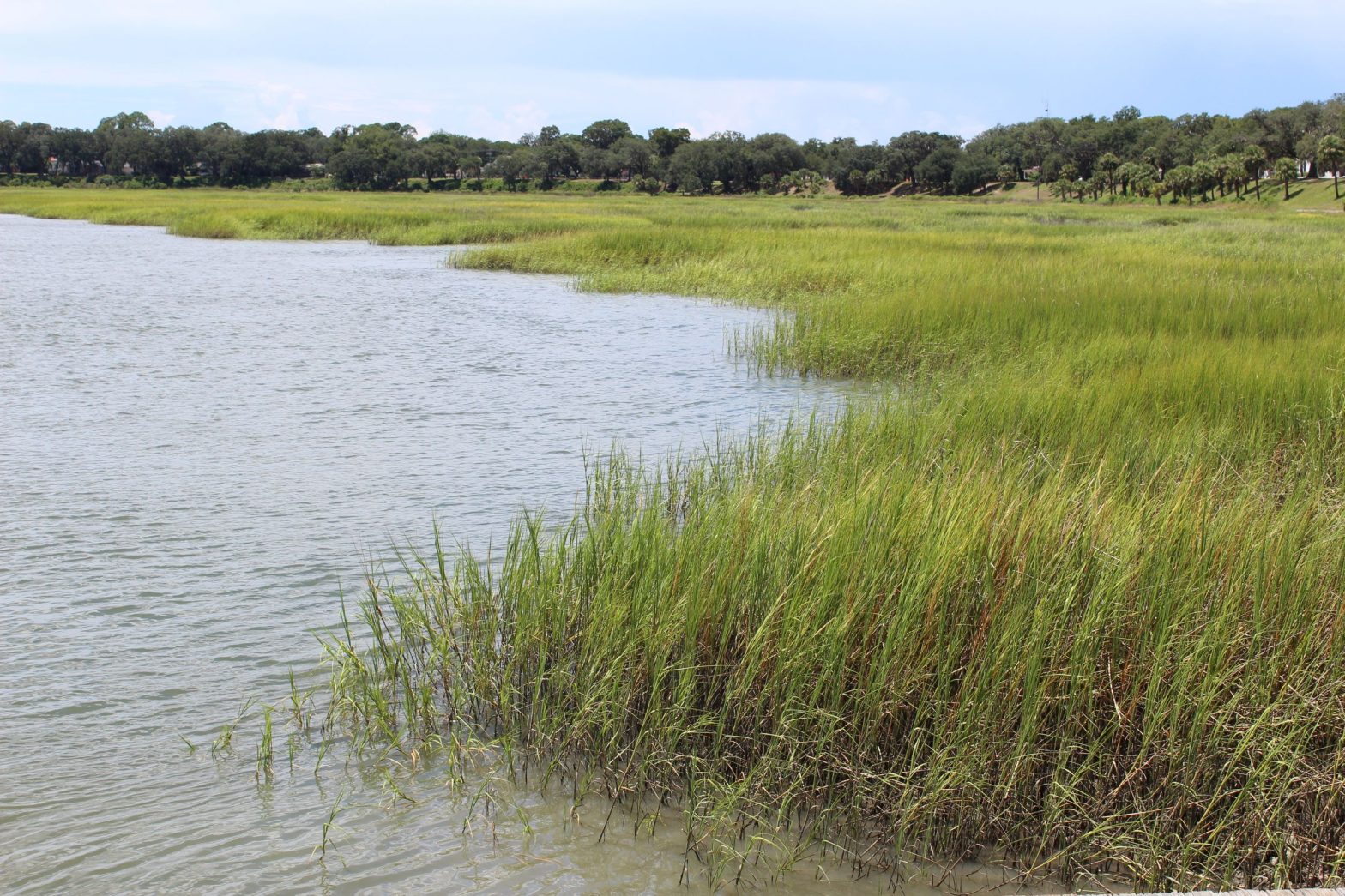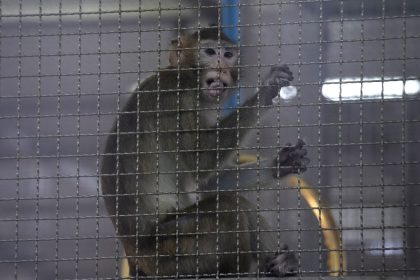What You Find in the Water Just Might Scare You

CHARLESTON, S.C. — There is nothing like summertime to bring us all closer to the water. But a recent study out of Charleston, South Carolina, suggests sharks and other creatures that bite or sting might be the least scary things to think about in our near coastal waters.
For instance, in the waters around this tourism mecca, a DNA project begun last fall found a large number of human pathogens, including evidence of tuberculosis, cholera and even the black or bubonic plague.
In all, College of Charleston biology professor Michael Janech and his team of student researchers identified about 12,000 different bacteria and fungal species in samples collected by the Charleston Waterkeeper, a local nonprofit that works to protect local waterways.
Of that total, more than 5,000 of the species found in the samples were potential human pathogens, meaning they could cause an outbreak of disease under the right conditions.
And some, Janech said, have even become antibiotic resistant, a byproduct of modern science and human waste literally being flushed into the natural environment.
But as worrisome as these findings might seem, Janech said they not only were expected — but they can probably be replicated up and down the eastern seaboard.
And he laughed a hearty laugh when a recent inquisitor announced he rarely swam in the ocean because “there’s a million things out there.”
“There’s always a million things out there,” he said between peals of laughter. “Yeah, that’s true, that’s true.”
Environmental scientists have long known that bacterial levels tend to surge in coastal waters in the wake of the rain and floods that accompany passing hurricanes, which are most prevalent along the South Atlantic coast from late August through early November.
So Janech felt the autumn — in this case, the autumn of 2021 — would be a perfect time to sample the water in and around Charleston Harbor.
“Esoteric science isn’t always relatable, but it’s extremely interesting,” he said as he began to explain what was behind his research.
“So what happened was I got interested in doing something called metagenomics because we wanted to do something called metaproteomics,” he said.
Metagenomics is the study of genetic material recovered directly from environmental samples.
Metaproteomics is an umbrella term for experimental approaches to study all proteins in microbial communities and microbiomes from environmental sources.
“Basically, I was trying to develop a database that we could then use to monitor all the different taxa and species and bacteria in the water and observe how those populations change over time,” Janech said. “But before I could actually build that database, I needed to sequence the DNA of all the different bacteria and organisms that live in the water.”
“That’s how this whole thing started,” he said.
For help, Janech, whose “team” consisted of himself and a technician, turned to the Charleston Waterkeeper — essentially a citizen science group — that was already collecting water samples and had garnered considerable attention
One of the group’s biggest successes stemmed from its monitoring of the James Island Creek, not far from downtown Charleston, where they identified persistently high coliform counts.
While most coliform bacteria are not harmful, others can cause upset stomach, vomiting, fever or diarrhea.
After the group took their findings to the local government, officials discovered that unregulated septic takes — some decades old — were leaching into the Creek. That discovery led to a change in public policy and since then the group has had a hand in several other environmental success stories.
“That got my attention,” Janech said. But something else intrigued him as well. That was the fact the group was reporting finding only a couple of different bacteria.
“I thought, there has to be way more than that,” he said with a laugh. “I mean, in just one milliliter of seawater — about what you could hold in the cap off a Coca-Cola bottle — you’ll typically find about a million bacteria.
“So, in their testing, they were really only monitoring a very small portion of what was in the water, and I said to myself, ‘I wonder what else is in there?’”
Charleston Waterkeeper reports the bacteria levels in local waters online each week from May to October. In October 2021, its members collected water samples from 20 different locations in the Charleston region and turned them over to Janech.
“With that came the fun part, which was determining the different bacterium, viruses and microorganisms in the water.
“Basically, it’s a matter of sequencing all of the DNA and then doing a series of database searches for matches, always asking yourself, ‘Where does this DNA belong?’ Or, ‘To whom does this belong?’ ‘Is it this kind of bacteria or that?’And eventually you start to create a list of the different things that are in the water.”
When it was observed that Janech seemed thrilled he found so much in his samples, the ecologist smiled
“Well, of course,” he said. “We love biology. We love life. And personally, what I like to do is ask simple questions, like, ‘What’s the most prevalent or dominant bacteria in the eco-system.?’ ‘And why?’ ‘Who are the big players in the ocean?’ And, ‘How do they end up shaping our environment?’”
“Now, just because we found tuberculosis in the water doesn’t make it pathogenic or virulent. It just means that it’s there, and it’s something we can be aware of and study,” he said.
“And remember too that some things are not virulent simply because they are in salty seawater; an important question to ask is, what happens if the water gets fresher as a result of something like climate change. In that case, it could take on the phenotype of being pathogenic. So it’s good to have this data and expand the scope of what environmental agencies and others are monitoring,” he said.
Why does salt water keep some of the bad microscopic critters swimming in it at bay?
Janech said that’s a hard question to answer.
“Every species is going to have its own tolerance to salt, some being more tolerant to salt than others,” he said. “Now, just because something is less salt tolerant doesn’t mean it’s not out there, existing, it merely means it’s probably not thriving or reproducing the way it would in a more beneficial environment — an environment they might find in a human being.”
Janech then returns to mycobacterium tuberculosis, a species of pathogenic bacteria that is the causative agent of tuberculosis.
“We know, through past research, that mycobacterium tuberculosis does have a salinity range that it enjoys. And there have been scientific papers that have suggested that if the level of salt in saltwater drops by say, 2%, making it fresher, infectivity will increase.”
“Now, that is one hypothesis, and there are a lot of contributory factors. But you may well ask, what happens if there’s an extreme rain or flooding event? Does this somehow change the infectivity of the potential human pathogens in and around Charleston Harbor? That’s the real question I’d like to get to at some point.”
Despite the worrisome sound of some of his findings, Janech was quick to stress throughout a recent interview that he didn’t want to sensationalize what’s out there, beneath the surface of the water.
“I mean, you see black plague pop up and you pause a moment, but it’s not like black plague is floating everywhere … In fact, it’s a common soil contaminant. And you don’t see people dropping dead of black plague around here,” he said. “These are things that are simply part of our environment.
“The same goes for Vibrio cholerae, which is what usually makes people sick when they eat contaminated shellfish or Staphylococcus aureus — the cause of staph infections. Pseudomonas aeruginosa … which can cause pneumonia … those are all in there … and in some cases, they’re prevalent.
“But that leads me to another disclaimer, just because something is prevalent, that doesn’t mean it’s really abundant,” he said. “In some cases, we’re looking at a bacterial species or potential human pathogen whose presence is less than .00009%. So we’re talking a very, very low amount.”
Of course, the obvious question is, what do findings in the waters around Charleston mean for other communities on major harbors, like Norfolk, Virginia, New York or Boston, or those on rivers like, for instance, Washington, D.C.?
“Broadly speaking, I think you’re more likely to see more human pathogens — things that could be shed in feces or urine — in more heavily populated areas than in rural areas. I mean that kind of goes without saying,” Janech said. “The question is what you do with your awareness of the situation.”
In recent years, Washington, D.C., itself has been dealing with the creeping effects of climate change, and a number of buildings near the heavil- trafficked National Mall, including the Smithsonian museums have experienced flooding and water intrusion.
Could this become more of a public health issue if Janech’s findings were replicated along the Potomac?
“Well, things like leptospirosis could become an issue, especially with increased flooding events,” he said, for a moment, at least, embracing an illustrative hypothetical.
Leptospirosis is a disease spread through the urine of infected animals. Most common in warm climates, humans who are infected can experience symptoms ranging from high fever, headache and muscle pain to chills, kidney and liver damage and even death.
“But really this has been more of a Third World problem because in the United States, if you get sick with this you’re going to be given antibiotics and that will take care of leptospirosis,” he said. “The problem is when people don’t get immediate medical care, then it can become a real problem.”
And once again, Janech pointed out that leptospirosis is all around us, every day.
“Our pets, our dogs in particular, are reservoir hosts for leptospirosis and we immunize them against it. But it still gets into our soil and when we see it in the soil, we’ll see it in the water … and it does become more pathogenic when it gets into a more freshwater environment … and at that point it could be a potential problem.”
So, one naturally asks, if all this icky stuff is in the water all around us, why don’t we have pandemics every other year?
“Well, the simple answer is we have immune systems that work pretty well,” Janech said. “We don’t give enough credit to our immune systems. On top of that, the environment has got to be exactly right — or looked at another way, the right ingredients have to be in the soup for things to be really, really infectious. That’s why, you know, we’re not seeing people with black plague everywhere. Infectious diseases that were a menace hundreds of years ago are now treated rapidly with a broad spectrum of antibiotics.”
Despite his faith in the human immune system and modern science, Janech said based on the data he’s reviewed, it’s probably best not to go out on Charleston, or any other harbor, immediately after a heavy rainfall.
“Let the runoff settle out, let the harbor flush,” he said. “Then the levels of everything are going to be lower than they would have been, especially of anything potentially pathogenic.”
“One of the things I wanted to do five years go, when my daughter was younger, was to sample the mud puddles that form on the Charleston peninsula after a heavy rain. You know, just to see what the kids were jumping into,” Janech said.
“You know, as in many other areas of science, there’s just not enough of this kind of sampling going on; there’s just not enough effort to try to determine, for instance, exactly what’s in the flood water along the street that people are kayaking in … and what’s actually going into the harbor from that runoff.
“That’s the thing I’m really curious about,” he said. “I mean, we do have tides and tides will flush those contaminants somewhere — but where? Where are they going? So, I still have lots of questions. In a sense, this study we did probably raised more questions than it answered. But at least this way, I think we’ve got evidence for future targets. And that’s what I like. That’s what I love about doing these studies.”
Dan can be reached at [email protected] and at https://twitter.com/DanMcCue.























